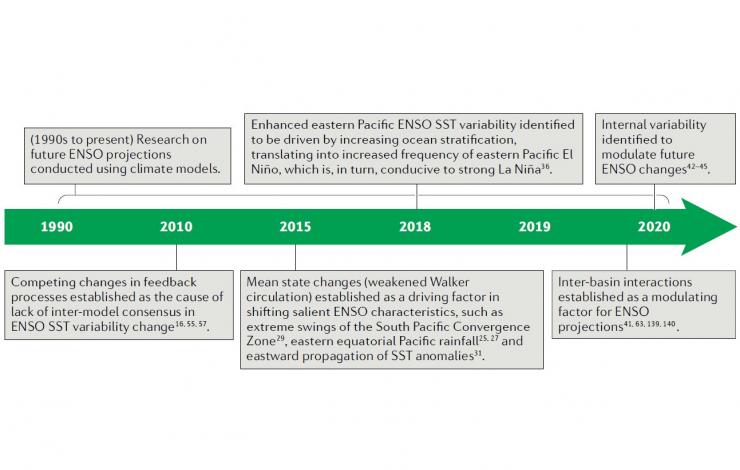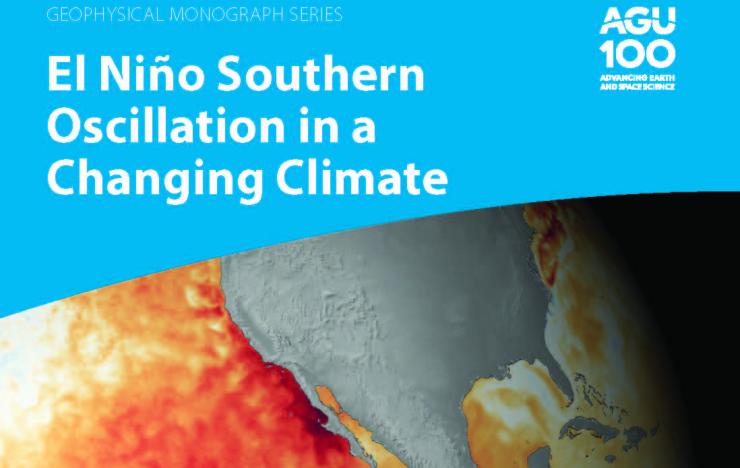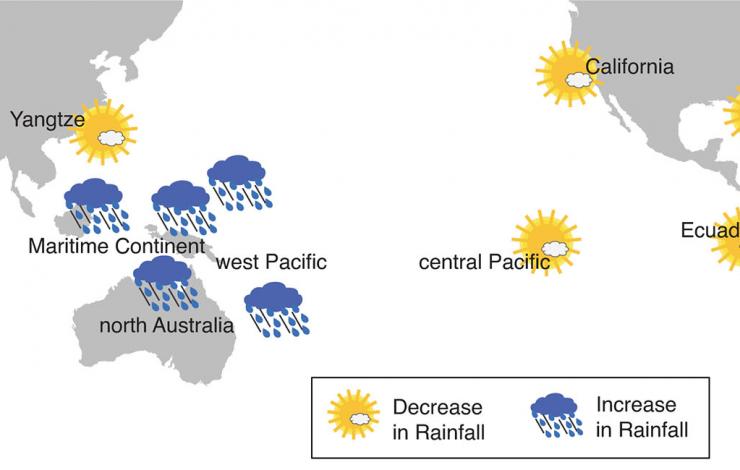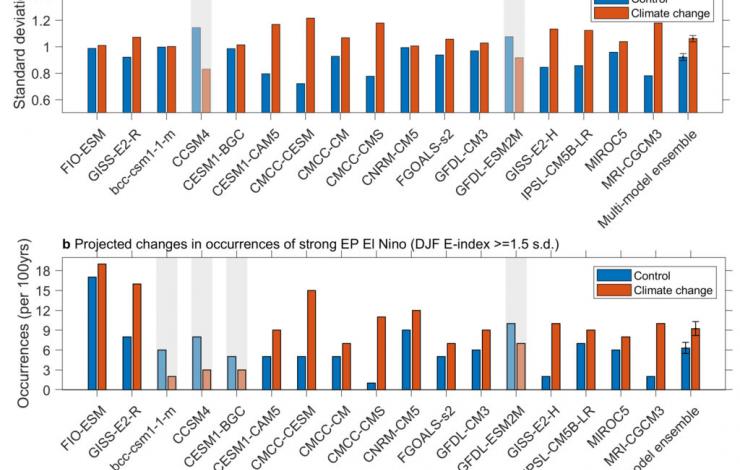Feature Publication Archive

Key developments in understanding El Niño–Southern Oscillation response to anthropogenic greenhouse gas forcing.
Cai, W., A. Santoso, M. Collins, B. Dewitte, C. Karamperidou, J.-S. Kug, M. Lengaigne, M.J. McPhaden, M.F. Stuecker, A.S. Taschetto, A. Timmermann, L. Wu, S.-W. Yeh, G. Wang, B. Ng, F. Jia, Y. Yang, J. Ying, X.-T. Zheng, T. Bayr, J.R. Brown, A. Capotondi, K.M. Cobb, B. Gan, T. Geng, Y.-G. Ham, F.-F. Jin, H.-S. Jo, X. Li, X. Lin, S. McGregor, J.-H. Park, K. Stein, K. Yang, L. Zhang, and W. Zhong (2021): Changing El Niño-Southern Oscillation in a warming climate. Nature Rev. Earth Environ., doi: 10.1038/s43017-021-00199-z.
El Niño-Southern Oscillation (ENSO), which originates in the tropical Pacific ocean through feedbacks between the ocean and the atmosphere, has highly consequential global impacts that motivate the need to better understand its responses to anthropogenic warming. This review article is in part a condensation of highlights from the recent AGU book published in November 2020 entitled "El Niño Southern Oscillation in a Changing Climate”. The article synthesizes advances in observed and projected changes of multiple aspects of ENSO, including the processes behind such changes. As in previous syntheses, it describes an inter-model consensus for increased future ENSO rainfall variability in the tropical Pacific. It also notes that the models which best capture key ENSO dynamics also tend to project an increase in future ENSO sea surface temperature variability and, in addition, an eastward shift and intensification of ENSO-related atmospheric teleconnections—the Pacific-North American and Pacific-South American patterns. Such projected changes are... more »

Satellite sea surface temperature departure for October 2015 over the Pacific. Orange-red colors indicate above normal temperatures, indicative of an El Niño condition. The 2015-16 El Niño was the first extreme El Niño of the 21st century and among the three strongest El Niños on record. Credit: NOAA National Environmental Satellite, Data, and Information Service (NESDIS)
El Niño Southern Oscillation in a Changing Climate, 2020. American Geophysical Union, M. J. McPhaden, A. Santoso, W. Cai (Editors). Washington DC, 528pp. Published online 2 November 2020. https://doi.org/10.1002/9781119548164.ch21
The El Niño Southern Oscillation (ENSO) in the Pacific Ocean has major worldwide social and economic consequences through its global scale effects on atmospheric and oceanic circulation,
marine and terrestrial ecosystems, and other natural systems. Ongoing climate change is projected to significantly alter ENSO’s dynamics and impacts.
El Niño Southern Oscillation in a Changing Climate presents the latest theories, models, and observations, and explores the challenges of forecasting ENSO as the climate continues to
change.
Volume highlights include:
- Historical background on ENSO and its societal consequences
- Review of key El Niño (ENSO warm phase) and La Niña (ENSO cold phase) characteristics
- Mathematical description of the underlying physical processes that generate ENSO variations
- Conceptual framework for understanding ENSO changes on decadal and longer time scales, including the response to greenhouse gas forcing
- ENSO impacts on extreme ocean, weather, and climate events, including tropical cyclones, and how ENSO affects fisheries and the global carbon cycle
- ... more »

Rainfall changes due to warming of the Indo-Pacific Ocean and corresponding changes in the Madden Julian Oscillation. The shining sun depicts areas of declining rainfall while the rain clouds show where rainfall is increasing. Credit: Roxy M. Koll, Indian Institute of Tropical Meteorology, et al., Nature

Cai, W., G.Wang, B.Dewitte, L.Wu, A.Santoso, K.Takahashi, Y.Yang, A.Carréric and M.J.McPhaden, 2018: Increased variability of eastern Pacific El Niño greenhouse warming. Nature. 564, 201-206.
https://doi.org/10.1038/s41586-018-0776-9.
...More


